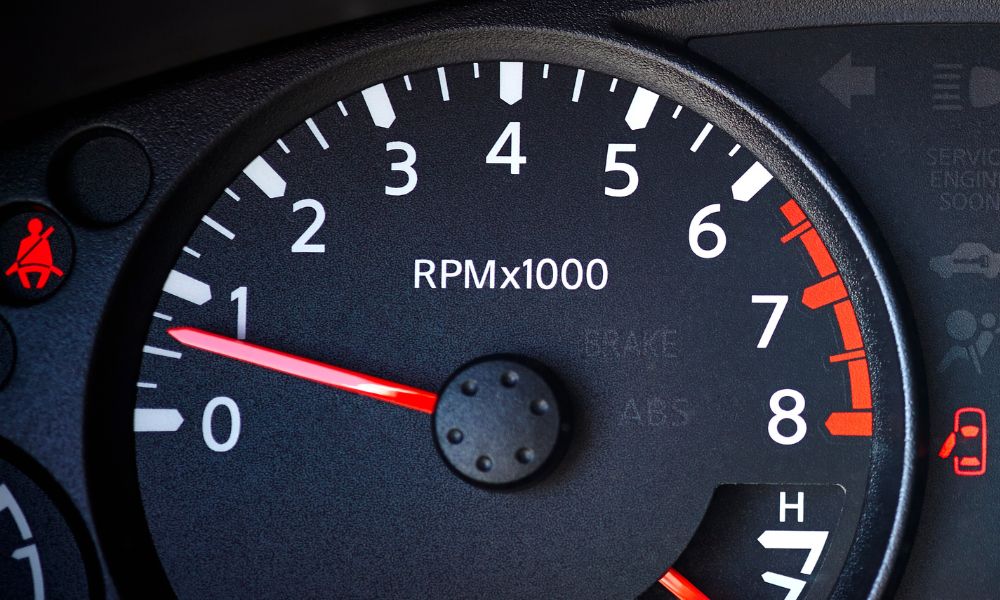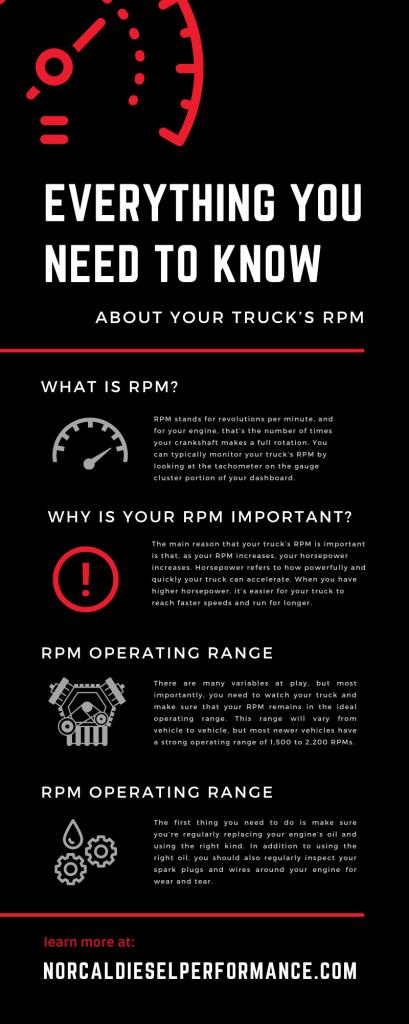


Your engine is one of the most important parts of your truck, and one metric of your truck’s performance is its RPM. If you want to fully understand how your truck works and ensure it’s running as optimally as it should, you must stay on top of your engine and RPM. You need to know almost everything about your truck’s RPM to be a responsible truck driver and get that RPM in the proper operating window.
The first thing you need to know about your truck’s RPM is what RPM means for you. In the most basic terms, RPM stands for revolutions per minute, and for your engine, that’s the number of times your crankshaft makes a full rotation. You can typically monitor your truck’s RPM by looking at the tachometer on the gauge cluster portion of your dashboard. Essentially, RPM measures your engine’s speed, which can help you see when your truck is running well or when something is wrong.
The main reason that your truck’s RPM is important is that, as your RPM increases, your horsepower increases. Horsepower refers to how powerfully and quickly your truck can accelerate. When you have higher horsepower, it’s easier for your truck to reach faster speeds and run for longer. This acceleration is important, and it directly relates to your RPM.
The formula for measuring the horsepower—your engine’s potential—is multiplying torque by RPM and dividing the product by 5252. RPM is one of the primary components in determining what the peak horsepower of your engine is. Still, a few different variables influence your crankshaft’s ability to rotate properly. The gear ratio of your transmission will influence RPM, as lower ratios result in higher RPMs, but the load you’re carrying will also cause your RPM to decrease. When you’re towing heavy loads, it will take much more work to move than when driving normally.
RPM is tricky to wrap your head around, but you only really need to monitor the RPM here and there. There are many variables at play, but most importantly, you need to watch your truck and make sure that your RPM remains in the ideal operating range. This range will vary from vehicle to vehicle, but most newer vehicles have a strong operating range of 1,500 to 2,200 RPMs.
This range strikes the best balance between optimal truck performance and fuel efficiency. Your engine needs to deliver power by managing fuel combustion, but you don’t want to waste all your fuel just to accelerate. If you’re driving normally and find your truck’s RPM deviating out of this window, there may be an underlying issue. It’s important to regularly monitor your engine’s RPM so that you can identify these issues and address them before they continue to hurt your truck.
There are a few different reasons that your engine’s RPM may not be in the proper operating window, and it’s important to figure out that reason sooner rather than later. One of the biggest reasons your RPM may struggle is that you have a malfunctioning oxygen sensor. This sensor monitors the air-to-fuel ratio in your engine, and if this ratio is not correct, your engine will have a much harder time rotating the crankshaft.
Another reason could be a defective plug wire that’s disturbing the ignition process. If your engine is going to have difficultly igniting and starting, that’s going to reflect in your RPM. The other common culprit is that your exhaust system has an issue somewhere, whether that’s a leak or a clogged filter. These issues would cause exhaust gas flow to not work as it should, hurting your engine’s power. Your engine could suffer from one or more of these issues, causing it to work outside its optimal range and damage your entire truck’s performance.
A truck with the right RPM is important, but how do you maintain this healthy RPM? The first thing you need to do is make sure you’re regularly replacing your engine’s oil and using the right kind. This oil helps to keep all the internal components lubricated, and it’s not something you can skimp on.
In addition to using the right oil, you should also regularly inspect your spark plugs and wires around your engine for wear and tear. These components will wear down over time, and it’s important you maintain their health because they’re a crucial component in the ignition process. Other parts you need to keep a close eye on include:
These parts help ensure your engine is in good condition and functions as it should, and when everything is functioning, your RPM will stay in the proper range. If you want to be a responsible vehicle owner, you must stay on top of these different components and give them the care and attention they need. Doing so will maintain your engine’s performance and keep it working optimally for years.
These are some of the reasons that your RPM could struggle, but there are a few different visible signs that alert you to problems. A lot of drivers fail to constantly monitor their trucks’ RPMs—instead, they’re more likely to notice more obvious signs such as excessive noise or difficulty shifting gears. Another major sign you’ll see is high oil temperature, something that damages your engine. A warning light should come on when your oil gets too hot.
While not all these signs are incredibly visible, you should stay on the lookout and take care of them and your truck before things worsen. In addition to protecting your truck and its integrity, addressing these issues also ensures optimal performance and safety.
One of the biggest benefits of keeping your truck’s RPM in the safe operating window is that it helps maintain optimal performance. In addition to keeping things safe, the right RPM will also increase your system’s fuel efficiency and reduce wear and tear in your engine. When everything is driving as it should, your truck will also be more responsive and drive much smoother, and you won’t need to repair or replace different components as often.
There’s a lot you need to know about your truck’s RPM, and once you fully understand all that’s going on in your engine, you can give it the care it needs. However, there are some engine changes that require a tuner or programmer. If you have a Cummins engine, let Norcal Diesel Performance help with our Cummins diesel programmers. We have what you need to adjust your engine and get the efficiency you’ve always wanted out of your truck.

You must login to post comments.